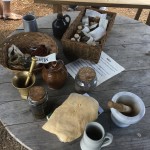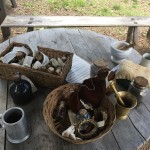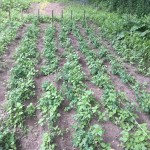Visiting Philipsburg Manor for the first time, I expected an educational and interesting visit to a restored historic collection of farming, milling and trading structures in what is now known as Westchester County. I was shocked to learn that the property was maintained by two dozen African slaves for almost 100 years, from the late 17th to late 18th centuries. I subsequently read that slavery was legal and in practice in New York at the time, and was not abolished in the state until 1827.
As historian Ana Lucia Araujo wrote in her article ‘Slavery in the Colonial North and the Philipsburg Manor’:
The Philipses were one of the largest families of slave owners in the [Colonial North.] Over the years, several generations of slaves lived in [the Philipses’ estate.] By the middle of the eighteenth century, in addition to the slaves kept in the city, Adolphe Philipse owned twenty-three slaves in the Upper Mills. His nephew Frederick [Philipse] II owned about twenty-two slaves.
Of course, these numbers do not seem big in comparison to the size of the Caribbean plantations or to the number of enslaved people owned by Portuguese slave owners in Brazil. However, by the time of its establishment, the agricultural, milling, and trading activities developed in the Philipsburg Manor, Upper Mills, were significant. Indeed, the importance of the site can only be understood by looking at its position in the larger context of the Atlantic slave trade in the North and South Atlantic systems, in which the Dutch were major players.
The family who owned the property, the Philipses, were of Anglo Dutch descent, headed by Frederick Philipse, who arrived in New York in the mid 1600s. By 1693 he was granted a royal charter, and the manor became a legal entity. The family leased their 52,000 acres of land to several hundred European tenant farmers. The Philipse heirs continued to develop the complex after Frederick’s death. Siding with the British after the American Revolution, they lost everything.
The tour started in the main house where the family lived, and progressed outside to a working, water-powered gristmill, then to the gardens and a huge barn. Each area had its own interpreter in period costume, who shared stories about Caesar, Susan, Dimond, Betty and other slaves who worked the property in 1750.
Here are a couple of videos I took of the water-powered gristmill:
Especially interesting to me was the display of herbs and home remedies that would have been a staple in any 18th century farm:
The garden would have contained several varieties of potatoes imported from Peru, along with other crops rotated in various seasons:
Popular with local school groups, Philipsburg Manor is open Wednesdays through Sundays from the spring (May) to early Fall (November).
Further reading
Plantation on the Hudson, New York Times
Sightseeing in my backyard series
Lyndhurst Blaze at Van Cortlandt Manor Hudson River Museum KykuitCategories: Culture, Our Times, Westchester






